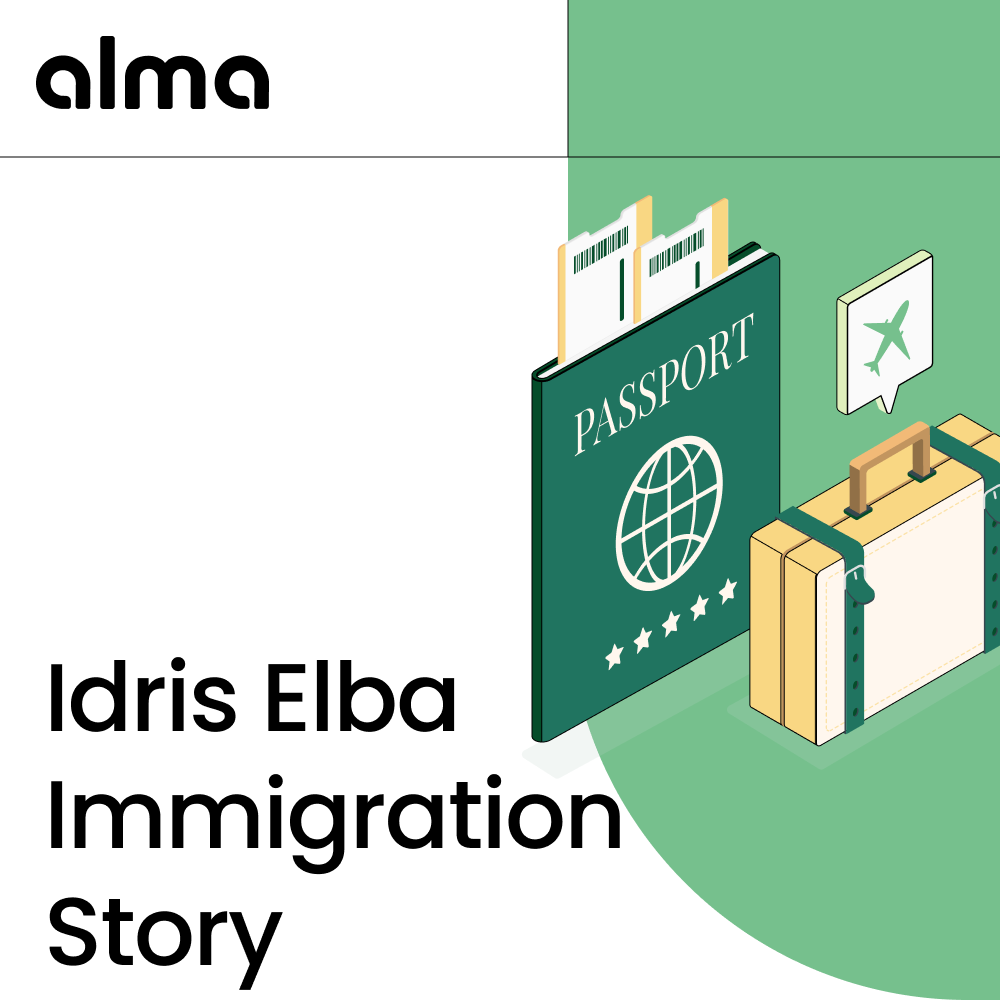- Pichai's immigration journey followed the traditional F-1 student to H-1B to employment-based green card pathway that enabled his 20-year rise from engineer to CEO
- Indians represent 71% of all approved H-1B visa applications, with Pichai part of a broader wave of Indian immigrant tech leaders
- Educational excellence at IIT Kharagpur, Stanford, and Wharton provided the foundation for visa sponsorship and career advancement in U.S. tech
- His net worth of over $1 billion illustrates the wealth-creation potential of high-skilled immigration pathways
- Fortune 500 companies founded by immigrants and their children generated $8.1 trillion in revenue and employ 14.8 million people globally
Sundar Pichai's path from a two-room apartment in Madurai, India, to leading one of the world's most valuable companies represents the classic American immigration success story—built on education, merit-based visa pathways, and sustained excellence. His trajectory from F-1 student visa to H-1B work authorization to CEO of Alphabet demonstrates how strategic immigration planning and professional development can lead to extraordinary outcomes, though today's skilled immigrants face increasingly complex pathways that require expert legal guidance from day one.
Who is Sundar Pichai? Early Life and Path to America
Born Pichai Sundararajan in 1972 in Madurai, Tamil Nadu, Sundar Pichai grew up in circumstances far removed from Silicon Valley wealth. His father worked as an electrical engineer at GEC, while his mother served as a stenographer. The family lived in a two-room apartment without basic amenities like a telephone until Pichai turned 12, yet they prioritized education as the pathway to upward mobility.
This focus on academic excellence proved transformative. Pichai excelled throughout his schooling, eventually earning admission to the prestigious Indian Institute of Technology (IIT) Kharagpur, where he completed a bachelor's degree in metallurgical engineering. The IIT system serves as a crucial pipeline for Indian talent entering U.S. tech, with its rigorous curriculum and competitive admissions preparing students for global opportunities.
In 1993, Pichai secured a scholarship to Stanford University for a Master's degree in Materials Science and Engineering—his entry point to America. This F-1 student visa represented the first step in an immigration journey that would span decades. Like many international students, the financial burden proved significant, but the investment in elite American education opened doors that would define his career trajectory.
After completing his Stanford Master's degree, he pursued an MBA at the Wharton School of the University of Pennsylvania, where he earned recognition as both a Siebel Scholar and Palmer Scholar—distinctions awarded to top students demonstrating leadership and academic excellence.
The Google Journey: How an Immigrant Rose to CEO
Pichai joined Google in 2004 as a product manager, initially working on the Google Toolbar. His immigrant status likely meant navigating H-1B visa requirements, employer sponsorship, and eventual green card processing—a journey that typically takes 10-15 years for Indian nationals due to per-country quotas.
His rise through Google's ranks demonstrates how the H-1B program can facilitate long-term career development:
- 2004-2008: Product management roles on Google Toolbar and Chrome browser
- 2008-2013: Leadership of Chrome browser development and ChromeOS
- 2013-2015: Oversight of Android operating system and Google Apps
- 2015: Appointed CEO of Google following corporate restructuring
- 2019: Named CEO of parent company Alphabet Inc.
This 11-year progression from middle management to CEO illustrates the career mobility possible for H-1B holders who demonstrate exceptional performance. However, visa dependency during this period created constraints—job changes require new sponsorship, entrepreneurial activities face restrictions, and termination triggers a 60-day departure deadline unless new sponsorship emerges.
For technology companies building teams with international talent like Pichai, Alma's business immigration platform provides scalable workflows, HRIS integration, and real-time compliance dashboards for managing H-1B and green card cases across growing organizations. With transparent per-case pricing starting at $3,500 for H-1B petitions and comprehensive compliance tracking, employers can support immigrant employees through multi-year immigration journeys while maintaining audit-ready records.
The Economic Impact of High-Skilled Indian Immigration to the U.S.
Pichai's individual success represents a data point within broader economic trends. Approximately 45% of Fortune 500 companies were founded by immigrants or children of immigrants.
Indian Americans specifically demonstrate exceptional economic outcomes:
- 21.7% entrepreneurship rate with 3.2 million immigrant entrepreneurs across all nationalities
- High concentration in STEM fields driving innovation and patent creation
- Substantial tax revenue generation and job creation multiplier effects
The H-1B program itself has proven economically beneficial despite political controversy. Research from the American Immigration Council indicates that immigrant workers create new job opportunities for native-born workers through complementary skill sets, with different types of workers filling different roles rather than directly competing.
Alphabet reported about 182,500 employees and $307.4 billion in revenue in 2023.
The Immigration Pathway Pichai Likely Took: H-1B to Green Card to Citizenship
While Google and Alphabet have not publicly disclosed details of Pichai's immigration timeline, the standard pathway for his generation of skilled immigrants followed a predictable sequence:
F-1 Student Visa (1993-1995): Entry to the U.S. for Stanford Master's degree, with Optional Practical Training (OPT) work authorization following graduation enabling initial employment at McKinsey.
H-1B Specialty Occupation Visa (1990s-2000s): Employer sponsorship for temporary work authorization, renewable in three-year increments up to six years maximum. The current H-1B cap of 65,000 visas plus 20,000 for advanced degree holders means lottery selection, though selection odds have improved as denial rates dropped from 24% in 2018 to just 2% in 2022.
Employment-Based Green Card (2000s): Google likely sponsored Pichai for permanent residency through either EB-2 (advanced degree) or EB-3 (skilled worker) categories. The process requires PERM labor certification demonstrating no qualified U.S. workers available, followed by I-140 immigrant petition, and finally adjustment of status or consular processing. For Indian nationals, backlogs can extend 10-15 years due to per-country quotas.
Naturalization to U.S. Citizenship (2010s): After five years as permanent resident, eligibility for citizenship through naturalization process requiring civics exam, English proficiency, and background checks. Naturalization fees currently total $760.
This timeline means Pichai likely spent 15-20 years in temporary or conditional status before achieving permanent security through citizenship—a period of sustained uncertainty affecting major life decisions.
Professionals navigating similar pathways benefit from expert legal guidance at each stage. Alma's visa application packages provide transparent flat-rate pricing: H-1B petitions at $3,500, EB-2 NIW at $10,000, and PERM labor certification at $8,000. Each package includes up to 3 free attorney consultations, platform access for case tracking, and administrative charges.
Lessons from Pichai's Journey for Aspiring Immigrant Professionals
Pichai's path offers actionable insights for professionals pursuing similar trajectories:
Education as Foundation: Elite credentials from institutions like IIT, Stanford, and Wharton opened doors and strengthened visa applications. While not everyone can access top-tier schools, demonstrating academic excellence and continuous skill development proves crucial.
Strategic Employer Selection: Choosing employers with established immigration sponsorship programs reduces visa uncertainty. Google's size and resources enabled comprehensive immigration support that smaller companies might struggle to provide.
Long-Term Planning: Understanding that the full immigration journey spans 10-20 years allows better preparation for career decisions, family planning, and financial management during periods of visa dependency.
Transferable Skills Development: Pichai's combination of technical expertise and business acumen created career flexibility. Developing skills that transcend specific roles or companies provides insurance against job loss during visa dependency.
Cultural Identity Balance: Maintaining connections to Indian culture while adapting to American professional norms enabled authenticity without limiting advancement opportunities.
For STEM professionals building similar careers, accessing personalized immigration support makes crucial differences in outcomes. Alma's individual immigration services provide expert attorneys with a 99%+ approval rate, free consultations to explore visa options, and guaranteed 2-week document processing turnaround—removing uncertainty from complex immigration processes.
For companies managing 26-250 foreign nationals, Alma's Growth Plan provides clarity and control with structured workflows, automated compliance alerts, and dedicated account management through custom pricing tailored to organizational needs.
Other Articles
- https://www.tryalma.com/blog/jensen-huang-immigration-story
- https://www.tryalma.com/blog/o1-extension-statistics
- https://www.tryalma.com/blog/green-card-denial-statistics
- https://www.tryalma.com/blog/h1b-lottery-statistics
- https://www.tryalma.com/blog/nicki-minaj-immigration-story
- https://www.tryalma.com/blog/jerry-yang-immigration-story
- https://www.tryalma.com/blog/apoorva-mehta-immigration-story
- https://www.tryalma.com/blog/noubar-afeyan-immigration-story
- https://www.tryalma.com/blog/tope-awotona-immigration-story
- https://www.tryalma.com/blog/jan-koum-immigration-story
- https://www.tryalma.com/blog/tony-xu-immigration-story
- https://www.tryalma.com/blog/o1-processing-time
- https://www.tryalma.com/blog/h1b-processing-time
- https://www.tryalma.com/blog/immigration-lawyers-fremont
- https://www.tryalma.com/blog/immigration-lawyers-oakland
Frequently Asked Questions
H-1B holders experience significant career constraints that Pichai would have faced during his early Google years. Visa dependency creates job lock—changing employers requires finding a new sponsor willing to file transfer petitions, limiting negotiating leverage and career mobility. The 60-day grace period following job termination creates intense pressure to find new sponsorship or leave the country. Entrepreneurial activities face severe restrictions, as H-1B status requires employer-employee relationship with the sponsoring company. Additionally, travel internationally carries risks if visa stamps expire, requiring consular appointments abroad that can face delays or denials. These constraints likely influenced Pichai's career decisions during his first decade in America.
Today's Indian immigrants face dramatically longer green card backlogs due to increased demand and unchanged per-country quotas. While Pichai likely secured permanent residency within 8-12 years, current EB-2 and EB-3 applicants from India face 20+ year waits between filing and green card approval. USCIS fee increases in 2024 raised H-1B filing costs, though total government fees typically remain under $5,000 per petition—still more than Pichai's era when fees ranged from $2,000-$5,000. Processing times have increased across categories, and policy uncertainty has intensified with frequent rule changes. Conversely, some improvements have emerged—H-1B denial rates dropped from 24% in 2018 to just 2% in 2022, and certain H-4 spouses gained work authorization rights unavailable to earlier generations.
The O-1 visa for individuals with extraordinary ability and EB-1 green card for exceptional talent provide alternatives to H-1B, though Pichai's profile in 2004 might not have met the high standards these categories require. O-1 petitions demand evidence of sustained national or international acclaim—major awards, published materials about the person's work, high salary compared to peers, and judging others' work. Early-career professionals typically lack sufficient documentation even if highly talented. However, by the time Pichai led Chrome development and gained industry recognition, he likely would have qualified for O-1 or EB-1 pathways. These categories offer advantages including no annual caps, faster processing, and greater job flexibility. Many tech leaders now pursue EB-1 or EB-2 NIW rather than waiting years in employment-based queues.
Large technology companies like Google provide substantial immigration support that smaller employers often cannot match. Google likely employed dedicated immigration attorneys, maintained relationships with USCIS officials, possessed experience with complex cases, and absorbed all legal fees without passing costs to employees. The company's financial stability assured immigration officials of continued employment and ability to pay prevailing wages. Google's compliance infrastructure for LCA postings, I-9 verification, and federal contractor requirements meant proper handling of all immigration paperwork. Additionally, Google's willingness to wait through multi-year green card processing while keeping Pichai in critical roles demonstrated organizational commitment that smaller companies struggling with headcount might not sustain. This comprehensive support ecosystem proves crucial for successful immigration outcomes.
Satya Nadella's immigration journey closely parallels Pichai's—both came from middle-class Indian families, attended top engineering programs (though Nadella graduated from Manipal Institute of Technology rather than IIT), pursued U.S. Master's degrees, and climbed corporate ladders through H-1B to green card pathways. Shantanu Narayen followed a similar pattern through Osmania University in India to Ph.D. at Stanford. However, not all immigrant tech leaders followed H-1B routes. Elon Musk arrived on student visa from South Africa but pursued entrepreneurial pathways through various visa categories while building companies. Jensen Huang of NVIDIA immigrated as a child, gaining citizenship through family channels rather than employment-based categories. These varied paths demonstrate that while education-to-H-1B represents the most common route for Indian tech leaders, multiple immigration pathways can lead to executive success.
%20(1).png)



.png)
.png)


